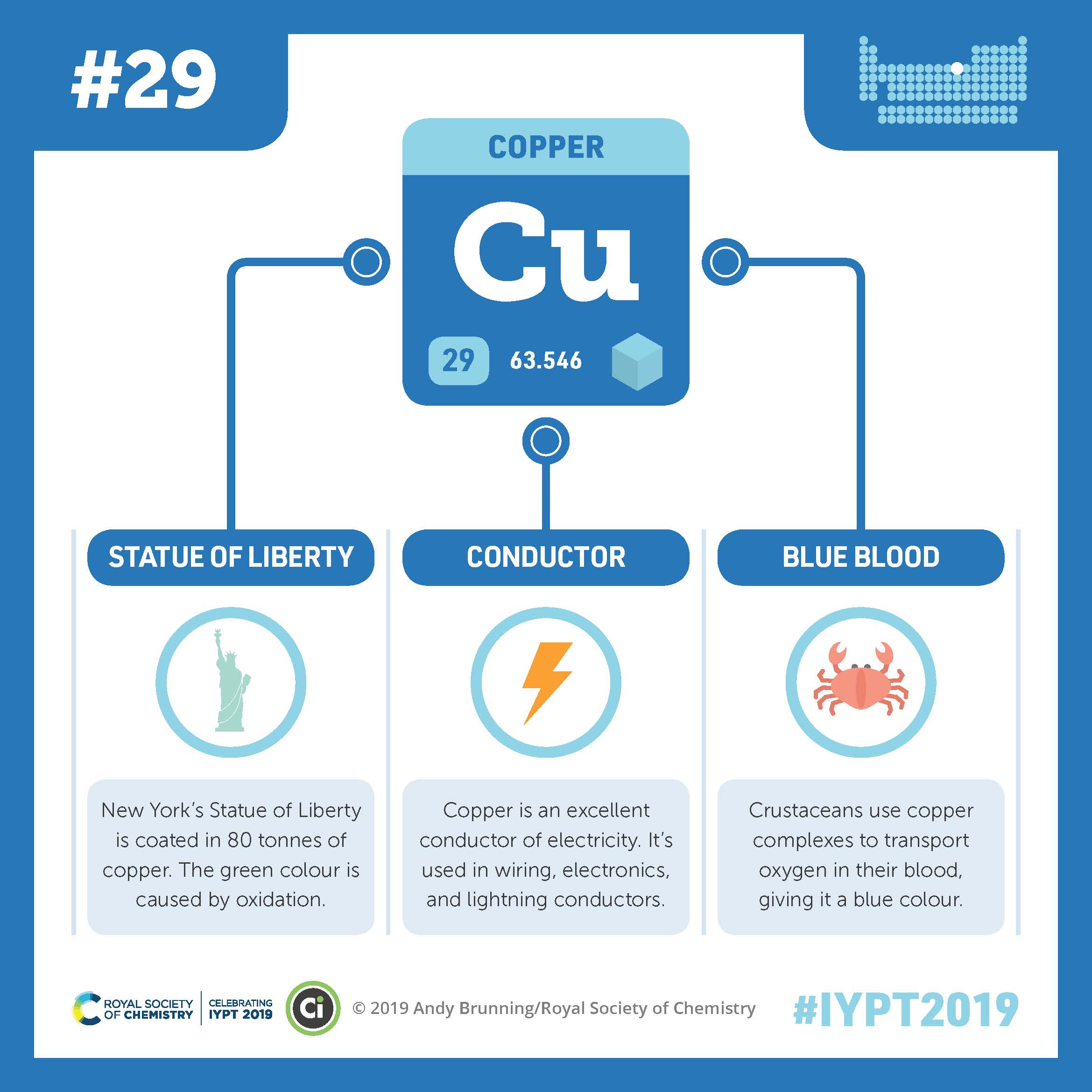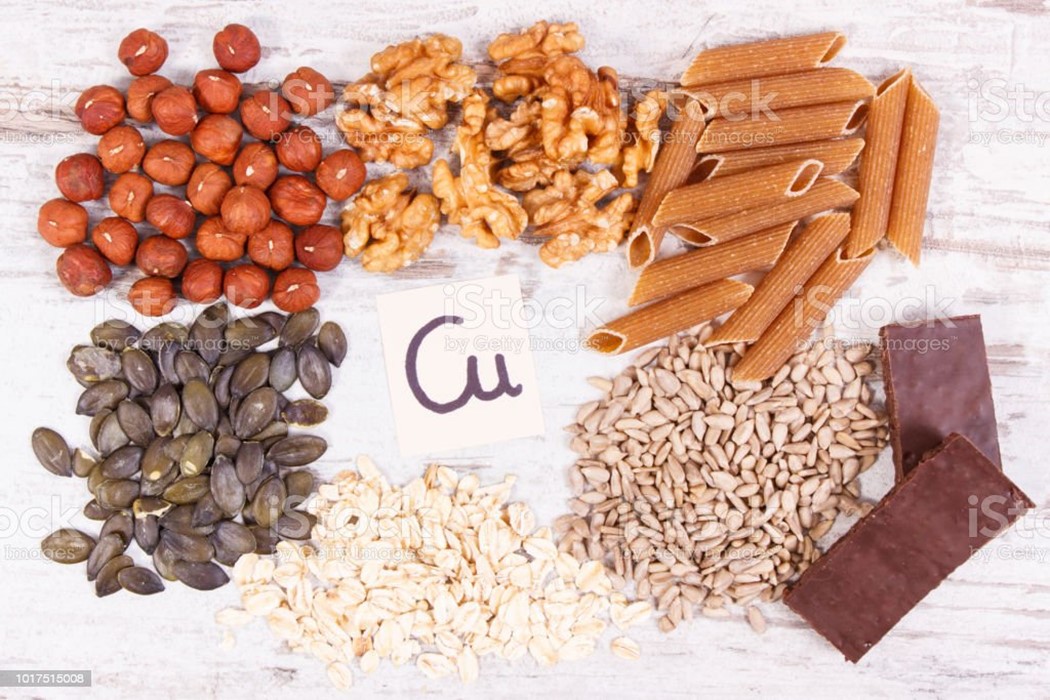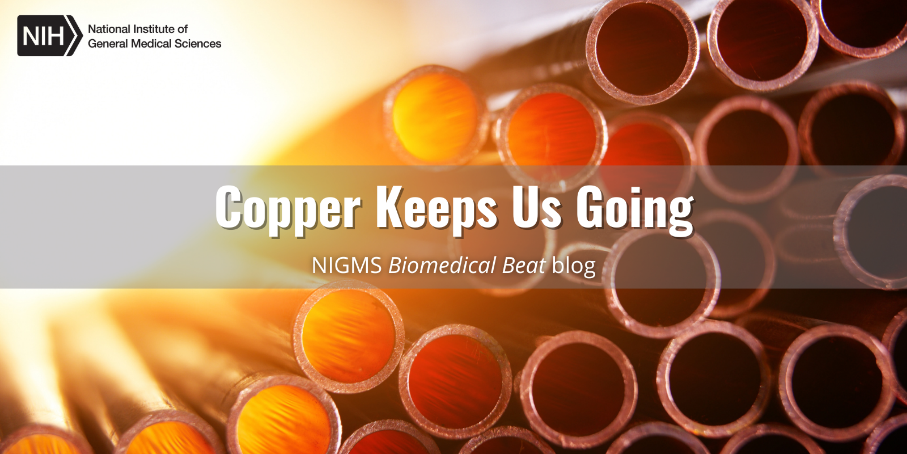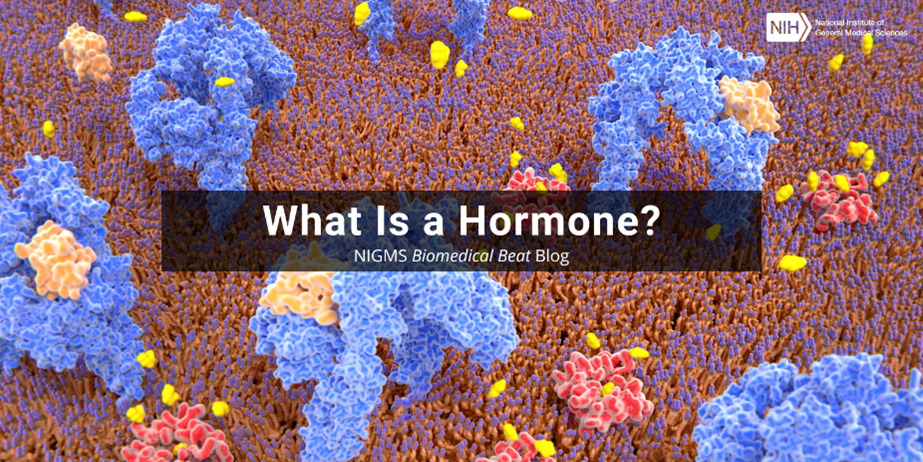Copper pipes, copper wires, copper…food? Copper is not only a useful metal for conducting electricity, but it’s also an essential element we need in our bodies for a variety of important activities—from metabolizing iron to pigmenting skin.
 Copper is required to keep your body going. Enzymes that use copper are called cuproenzymes, and they catalyze a wide range of reactions, including making neurotransmitters and connective tissue. The element is found on the Statue of Liberty’s covering, in wiring and electronics, and in the blue blood of crustaceans. Credit: Compound Interest CC BY-NC-ND 4.0. Click to enlarge.
Copper is required to keep your body going. Enzymes that use copper are called cuproenzymes, and they catalyze a wide range of reactions, including making neurotransmitters and connective tissue. The element is found on the Statue of Liberty’s covering, in wiring and electronics, and in the blue blood of crustaceans. Credit: Compound Interest CC BY-NC-ND 4.0. Click to enlarge.
Copper’s Calling Card
Copper serves as a cofactor for enzymes—called cuproenzymes—that perform a variety of important tasks throughout the body. Some of those roles include:
- Catalyzing the conversion of oxygen into water to create an electrical gradient that mitochondria use to make ATP, the cell’s main source of energy
- Chemically linking collagen and elastin to form connective tissue
- Oxidizing iron to the form needed to make red blood cells
- Performing important functions in the central nervous system like synthesizing phospholipids needed for myelin sheaths and creating neurotransmitters
- Synthesizing melanin, the compound that gives skin, hair, and eyes their color
- Serving as an antioxidant to protect cells from oxidative damage

The Color of Blood
Humans have a protein called hemoglobin that uses iron to bind oxygen and carry it through our bloodstream. The iron makes our blood red. But other organisms, like snails, spiders, octopuses, and squids, have a different oxygen-transporting protein called hemocyanin, which uses copper instead of iron. Their blood is blue because of copper!
Culinary Copper

Almost all Americans get enough copper from their diets. It’s found in a variety of different foods, including beef liver, shellfish, chocolate, potatoes, and mushrooms. Our bodies absorb most copper through the small intestine, but only a small portion of what’s absorbed is needed. That copper is stored in bones and muscles, while the rest is excreted through bile.
NIGMS-Supported Copper Research
NIGMS supports many scientists conducting copper-related research. Some of them are:
- Exploring how fungal pathogens capture and use copper in their antioxidant proteins
- Activating yeast proteins with copper to help understand how DNA transcription levels affect replication
- Using copper as a catalyst in chemical reactions to modify molecular structures in the search for new and better medicines
- Identifying how high levels of copper or other metals in cells affects proteins and causes toxicity, in hopes to develop medicines for infections or diseases like cancer
- Investigating how biological molecules affect copper metabolism and transport within the body
Check out our other posts on elements.







